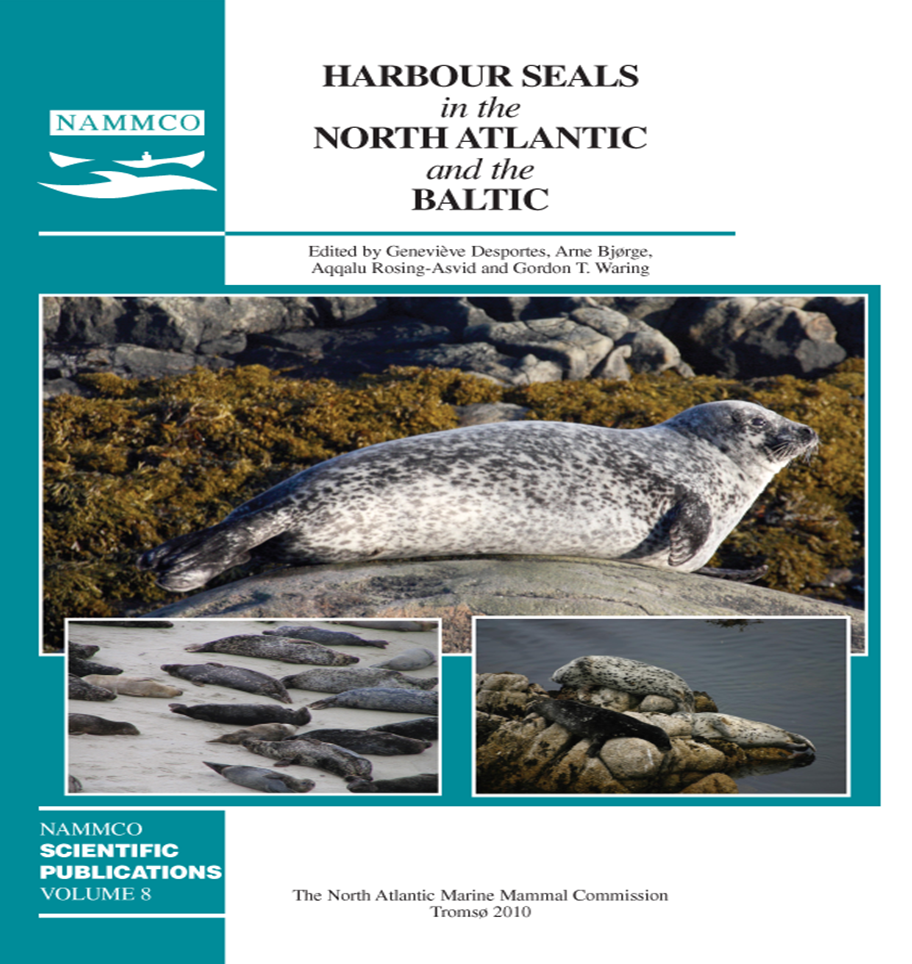Status and biology of harbour seals (Phoca vitulina) in Svalbard
DOI:
https://doi.org/10.7557/3.2671Keywords:
harbour seals, SvalbardAbstract
Harbour seals in Svalbard are the northernmost population of this species. This small population is comprised of ca. 1,000 individuals, most of which reside along the west coast of Prins Karls Forland (78°20’N). Satellite tracking studies have shown that adults are resident. Birthing occurs in the latter half of June. Newborns weigh about 11 kg and gain an average of 0.7 kg/d during the nursing period. Haulout patterns in Svalbard harbour seals are influenced by date (season), time of day, tidal cycle and temperature. Moulting takes place in early fall, first among juveniles, then in adult females and finally in adult males. Feeding studies show that polar cod (Boreogadus saida) is the dominant prey in terms of numbers, while Atlantic cod (Gadus morhua) is the dominant prey based on biomass, at least during the early autumn. Growth curves display significant sexual dimorphism with asymptotic values for standard length and body mass being greater formales. Testosterone levels inmales showed an abrupt increase at 6 years of age, while estradiol levels in females increased abruptly from age 4 years. The reproductive rate for adult females was 0.93. Longevity of Svalbard harbour seals is very short compared with populations from other areas.Downloads
Published
2010-09-01
How to Cite
Lydersen, C., & Kovacs, K. M. (2010). Status and biology of harbour seals (<i>Phoca vitulina</i>) in Svalbard. NAMMCO Scientific Publications, 8, 47–60. https://doi.org/10.7557/3.2671
Issue
Section
Articles





